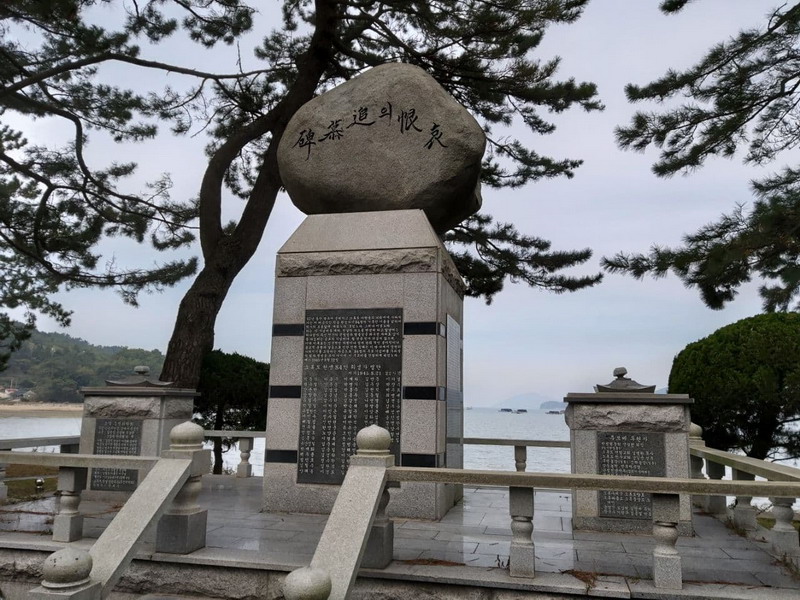Sorok-do: Island of Patients
By Melline Galani.
When I visited Sorok-do (Sorok Island) on an organized trip, I did not know what to expect. We were told that Sorok-do has long been called the “Leper Island” because patients suffering from leprosy are treated there, as they have been for more than one hundred years. To be honest, I did not and still do not know much about the disease. I thought it was an ailment spread during the Middle Ages that had been eradicated a long time ago.
According to the CDC (Centers for Disease Control and Prevention)1 leprosy, also known as Hansen’s Disease, is an infection caused by a slow-growing bacteria called Mycobacterium leprae. It is one of the oldest diseases in recorded history. The first known written reference to leprosy is from around 600 B.C.
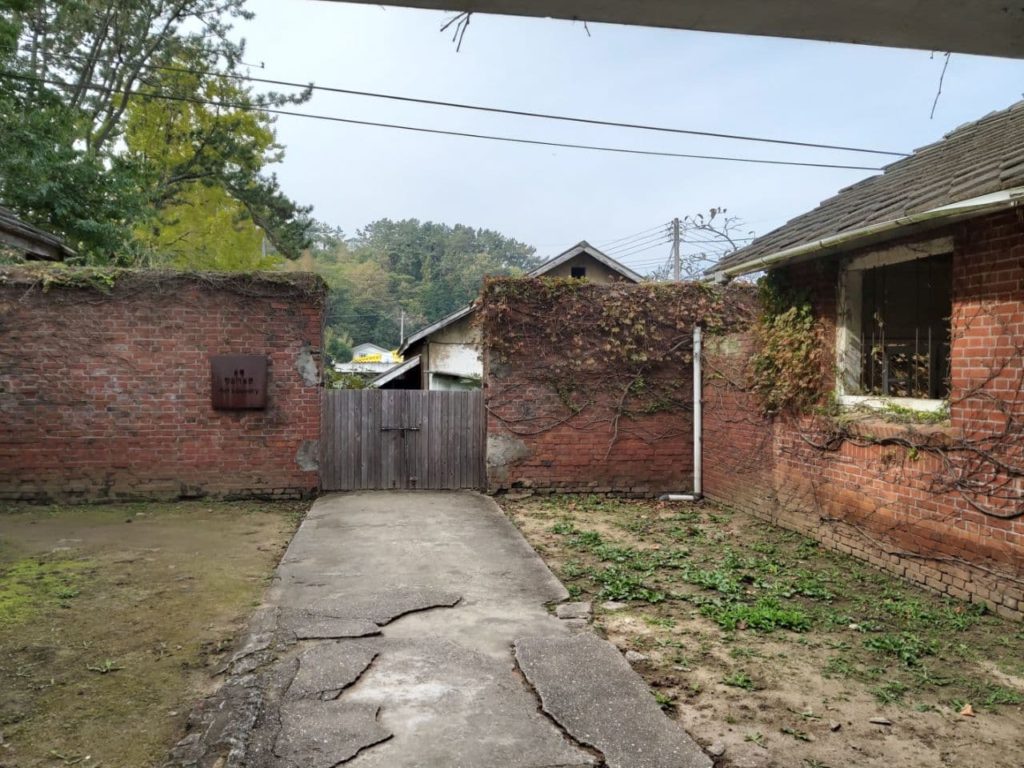
It primarily affects the nerves of the extremities, the skin, the lining of the nose, and the upper respiratory tract. With early diagnosis and treatment, the disease can be cured. People with Hansen’s disease can continue to work and lead an active life during and after treatment.
Since antiquity, is was believed that people with Hansen’s disease should be kept isolated in colonies so as not to spread the disease. They faced discrimination, isolation, and hardships beyond imagination. Sorokdo National Hospital, situated on the island with the same name, reflects the country’s colonial legacy. Sorok-do is home to Korea’s largest leper colony.
Being on an organized trip, we had a guide explaining things in detail during the tour. There are also bilingual descriptions in almost all areas. The island can now be reached by car because a bridge connecting it to the mainland was built twelve years ago. Before that, the island could only be reached by boat, making it perfectly isolated from the mainland. As described below, this resulted in the Japanese building a concentration camp on Sorok-do.
The hospital was built in 1916 (then known as the Sorok-do Charity Clinic)2 under the leper quarantine policies of the Japanese colonial administration (which enacted the Leprosy Prevention Law in 1907). Sorokdo National Hospital has cared for a colony of Hansen’s disease residents since then – the largest in Korea – and the island infamously served as a concentration camp for these patients throughout the Japanese occupation of Korea from 1910 to 1945.3 At its peak, Sorok-do was home to about 6,000 Hansen’s disease patients, and the hospital’s busiest department was the operating room where the lepers were sterilized.
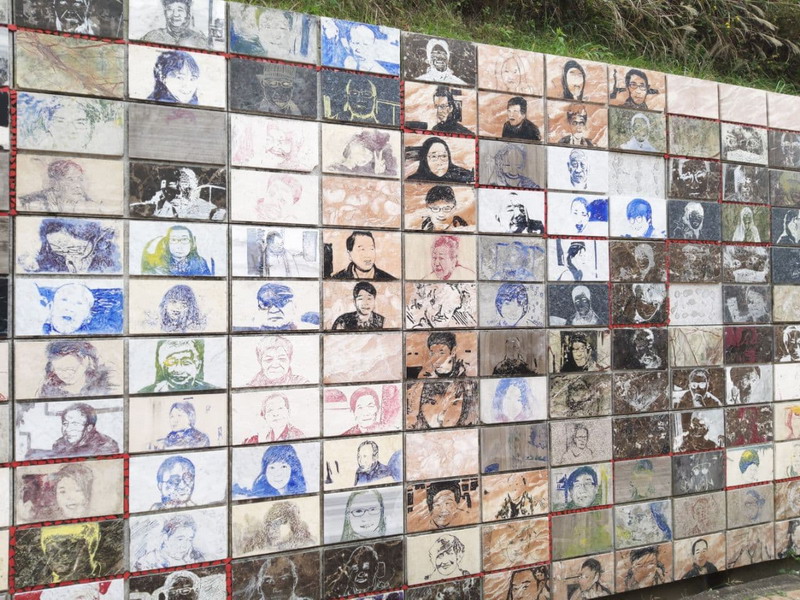
Long story short, thousands of people were starved and tortured on the island. First by the Japanese until 1945, and then by the Korean authorities, who continued to quarantine lepers on Sorok-do until 1963. In addition to forced labor, patients were subjected to forced vasectomies, abortions, and amputations both as part of medical experiments and out of fear that the disease was hereditary.
During the Japanese occupation, one of the directors of the hospital was Masato Suho. He built a statue of himself and urged people to worship it (the statue no longer exists). In 1942, a patient named Lee Chun-sang killed the director and he, too, was executed. Discrimination and atrocities continued on Sorok-do even under the Korean administration. For example, although a few select patients were allowed to have children, these parents could only see their offspring once a month, and the children had to leave the island after they reached school age. Men were not allowed to marry fellow patients unless they first underwent vasectomies.4 Furthermore, on August 22, 1945, eighty-four patients were killed by armed staff during a conflict between hospital employees and patients.5 Today, the old hospital building has been replaced by a new, modern structure. The hospital is still in operation, in part dedicated to the care of dementia patients. Anyone diagnosed with Hansen’s disease can be admitted to the hospital and may leave after treatment.
The island has a tranquil but somehow desolate beauty, with two long beaches and pine trees. But its history is stained with blood and tears. As it is not entirely open to the public, we could visit only a part of it. Among the places we visited, two locations stuck deep in my mind: the autopsy lab and the rehabilitation center.
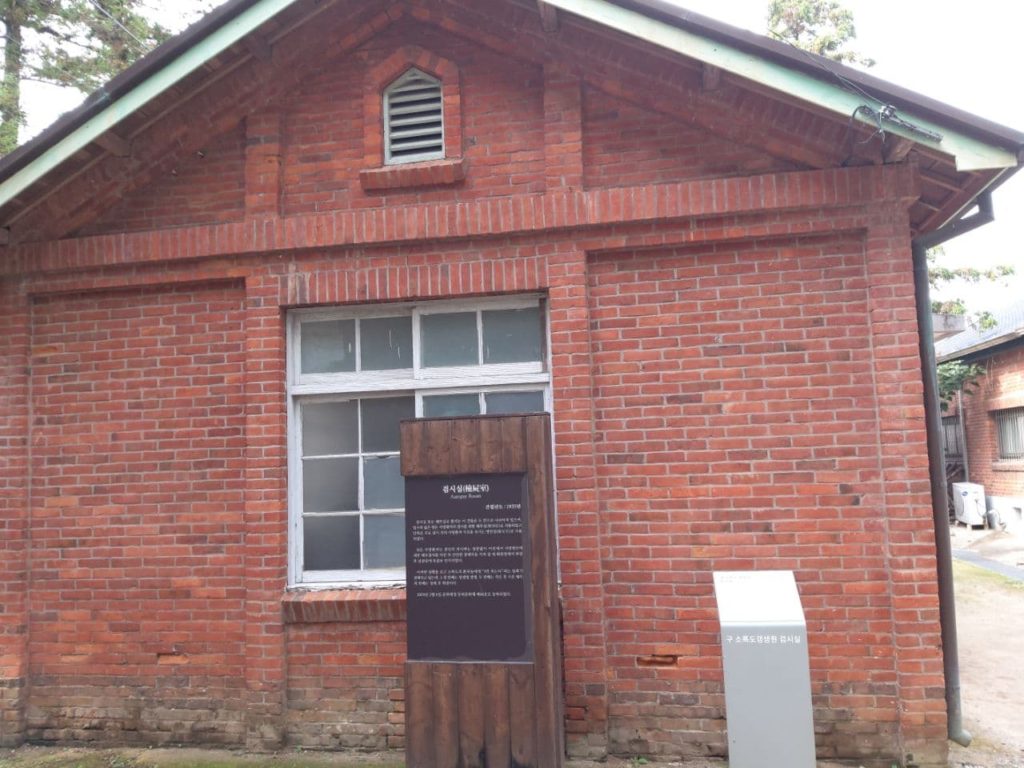
The autopsy lab is composed of two rooms, one for autopsies and one for sterilizations. The rooms retain the smell and screams from the past. It is the desolate view that stuck with me. The lab’s most striking feature was the operating table, used for vasectomies and sterilizations, lying alone in the middle of a quiet room. Feelings of sorrow and regret accompanied me on the tour.
The rehabilitation center lies next to the autopsy lab in a red-brick, H-shaped building comprised of small, dark, and cold detention rooms (the center was not a prison but looked as if it were). Everything looked horrible, as in a horror movie. Not even one’s imagination can picture the inhuman treatment the people once detained here must had suffered.
But not everything is sad about Sorok-do. There is a central park, a beautiful garden with monuments, and nicely tailored trees. A stroll on its paths may bring light and joy to a burdened mind after seeing the above-mentioned places.
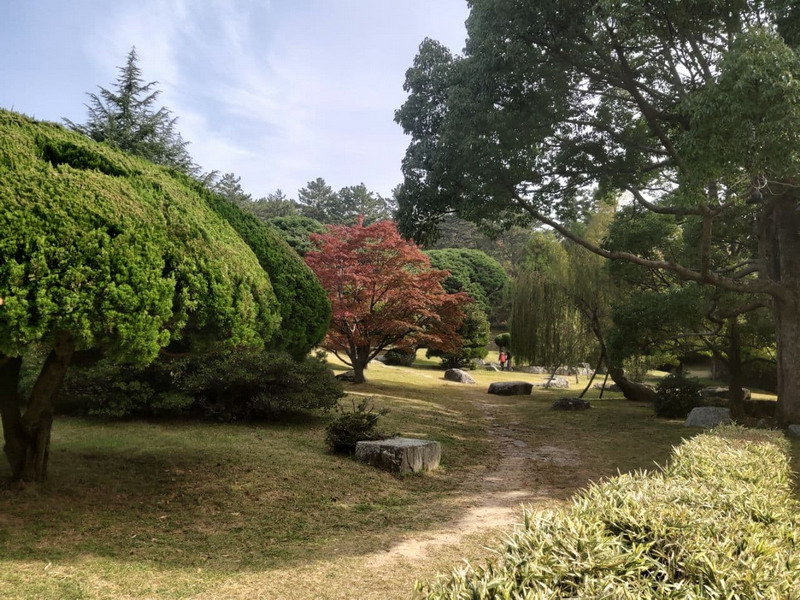
The tour guide also told us the story of two Austrian nurses, Margreth Pissarek and Marianne Stoeger, who came to the hospital in 1962 to help the patients. The two Austrian nurses not only corrected many misbeliefs about leprosy, but also sought some medicine and other aid for the patients and their children, even asking their own families and acquaintances to send medicine, while getting nutritional supplements and milk powder for the children who suffered from malnutrition. For children isolated from their parents, they built a childcare center and made clothes for them by hand.6 They stayed for forty years, and for all the good they did, they are considered angels among the island’s population.
Today the Sorokdo National Hospital, in addition to the treatment of patients, houses the Hansen’s Disease Museum. Rather than being a site of horror, today it is an island of healing.
I think Sorok-do is a must-visit place for its history, something that we should not be allowed to forget. For my children and me, it was a memorable experience that also taught a history lesson that all generations, especially the young, need.
Resources
1 CDC. (2017). Hansen’s Disease (Leprosy). Centers for Disease Control and Prevention. https://www.cdc.gov/leprosy/index.html
2 Sorokdo National Hospital. (n.d.). History. Accessed February 23, 2019. http://www.sorokdo.go.kr/eng/html/content.do?menu_cd=04_02&depth=hi
3 Jeffreys, D. (2011). Sorok Island: The last leper colony. Independent. https://www.independent.co.uk/news/world/asia/sorok-island-last-leper-colony-5334621.html
4 Jeffreys, D. (2011). See above.
5 Lee, H. (2018). Books shed light on former leper colony. Korean Biomedical Review. https://www.koreabiomed.com/news/articleView.html?idxno=2381
6 Chang, I. (2016, February 11). Angels descend on Sorokdo. Korea.net. https://www.korea.net/NewsFocus/People/view?articleId=132478
SOROK ISLAND 소록도
Address: Sorok-ri, Doyang-eup, Goheung-gun, Jeollanam-do 전라남도 고흥군 도양읍 소록리
Phone: 061-830-5637
The Author
Melline Galani is a Romanian enthusiast, born and raised in the capital city of Bucharest, who is currently living in Gwangju. She likes new challenges and learning interesting things, and she is incurably optimistic. Instagram: @melligalanis



